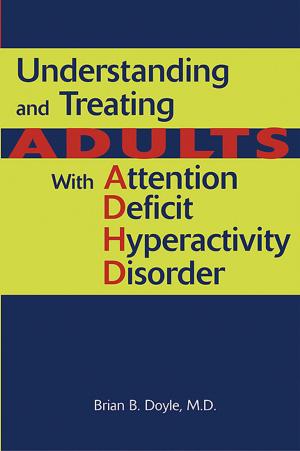Preventing Bullying and School Violence
Nonfiction, Health & Well Being, Psychology, Psychiatry, Medical, Specialties| Author: | Stuart W. Twemlow, MD, Frank C. Sacco, PhD | ISBN: | 9781585629732 |
| Publisher: | American Psychiatric Publishing | Publication: | September 24, 2012 |
| Imprint: | American Psychiatric Association Publishing | Language: | English |
| Author: | Stuart W. Twemlow, MD, Frank C. Sacco, PhD |
| ISBN: | 9781585629732 |
| Publisher: | American Psychiatric Publishing |
| Publication: | September 24, 2012 |
| Imprint: | American Psychiatric Association Publishing |
| Language: | English |
Results from numerous surveys indicate that many students do not feel safe in school. This condition exacts an academic as well as a psychological toll because, as the authors remind us, children must feel safe in order to learn. The authors of Preventing Bullying and School Violence contend that inadequate attention has been given to the role of mental health professionals in preventing bullying and school violence. They propose a collaborative, multidisciplinary approach, one that draws upon the skills of the educational, health care, and mental health communities in identifying risk, choosing appropriate interventions, and implementing targeted wellness programs. The authors see bullying as a process, not a problem originating with a single troubled person. Accordingly, they believe that bullying behaviors can be effectively addressed only by targeting the broader social context -- the coercive power and group dynamics that breed and maintain bullying and violent behavior in the school setting.
The book is designed to help clinicians, school counselors, and administrators create a safe climate for their students and to respond thoughtfully, but swiftly, when threats arise. The authors offer many practical guidelines for achieving these goals, addressing The critical importance of establishing a strong connection between the family, the school, and the community in creating a healthy academic environment Strategies for working effectively with the complex social bureaucracies that often characterize the entities (such as school boards and governmental agencies) that intervene in cases involving violent children, with an emphasis on developing skills in managing both small and large groups Ways to define and recognize at-risk children who require special attention as a result of having mental illness and/or learning disability Innovative community interventions, such as therapeutic mentoring and home-based therapy, in addition to information on local, state, and federal programs designed to support antiviolence programs in the schools Techniques for promoting wellness among the student population -- not just physical wellness, but also the positive attitudes and coping skills that are the hallmarks of mental health.
Preventing Bullying and School Violence aims to empower mental health professionals to work confidently and effectively in educational settings to reduce the distress, enhance the psychological well-being, and secure the safety of all schoolchildren.
Results from numerous surveys indicate that many students do not feel safe in school. This condition exacts an academic as well as a psychological toll because, as the authors remind us, children must feel safe in order to learn. The authors of Preventing Bullying and School Violence contend that inadequate attention has been given to the role of mental health professionals in preventing bullying and school violence. They propose a collaborative, multidisciplinary approach, one that draws upon the skills of the educational, health care, and mental health communities in identifying risk, choosing appropriate interventions, and implementing targeted wellness programs. The authors see bullying as a process, not a problem originating with a single troubled person. Accordingly, they believe that bullying behaviors can be effectively addressed only by targeting the broader social context -- the coercive power and group dynamics that breed and maintain bullying and violent behavior in the school setting.
The book is designed to help clinicians, school counselors, and administrators create a safe climate for their students and to respond thoughtfully, but swiftly, when threats arise. The authors offer many practical guidelines for achieving these goals, addressing The critical importance of establishing a strong connection between the family, the school, and the community in creating a healthy academic environment Strategies for working effectively with the complex social bureaucracies that often characterize the entities (such as school boards and governmental agencies) that intervene in cases involving violent children, with an emphasis on developing skills in managing both small and large groups Ways to define and recognize at-risk children who require special attention as a result of having mental illness and/or learning disability Innovative community interventions, such as therapeutic mentoring and home-based therapy, in addition to information on local, state, and federal programs designed to support antiviolence programs in the schools Techniques for promoting wellness among the student population -- not just physical wellness, but also the positive attitudes and coping skills that are the hallmarks of mental health.
Preventing Bullying and School Violence aims to empower mental health professionals to work confidently and effectively in educational settings to reduce the distress, enhance the psychological well-being, and secure the safety of all schoolchildren.















